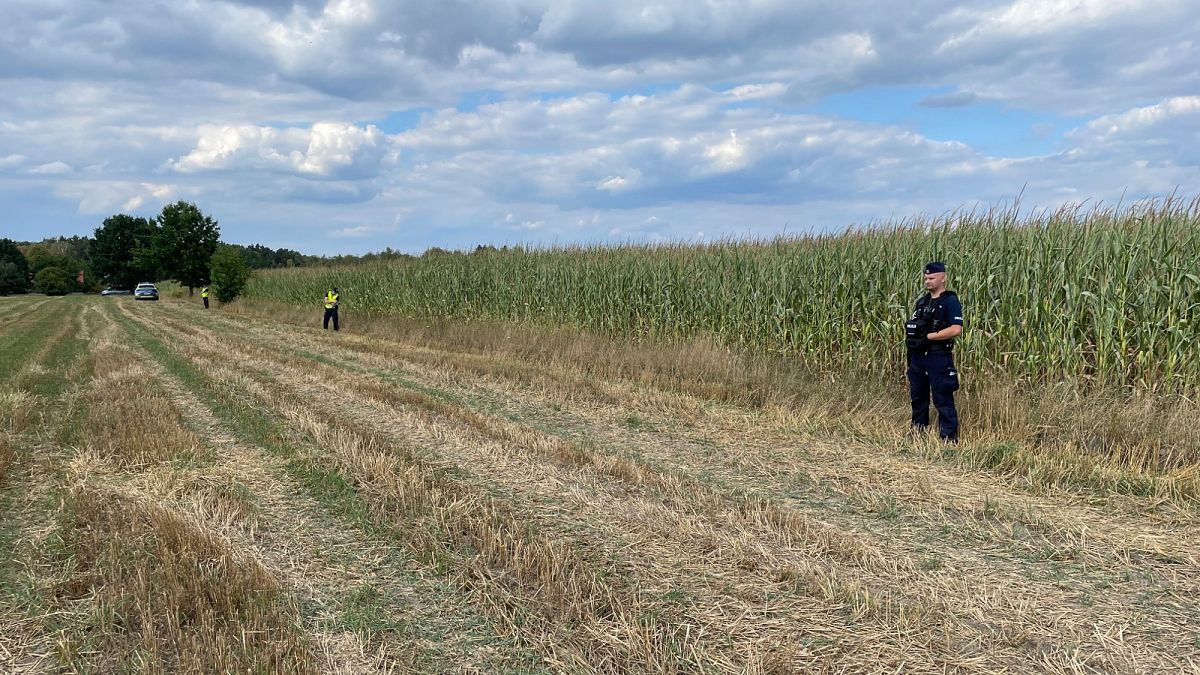The explosion of unmanned aerial vehicles in a small village in the Lublin region on Tuesday night is another of a series of incidents that have been part of the war with Ukraine since the 2022 Russian invasion.
In February 2024 and February 2025, a total of three Russian Shahed drones exploded in Moldovan territory. In September 2024, Russian drones violated the airspace in Latvia and Romania. Thus, Lithuania’s Foreign Minister Gabrielius Landsberghis commented on Platform X.
In an interview with Euronows, military expert Andrzej Kiński is trying to assess the level of threat to civilians.
“Given that this conflict has been going on for over three years, there have been some such incidents in Poland (at least we know) and two casualties. But given the number of people who die in road accidents and other unfortunate incidents, this is a limit. Of course, they should not be underestimated.
It is also undoubtedly that Kiski should be used to the idea that weapons used for war could appear on Polish territory.
“The risk of this kind of further incident is important as conflict continues. We don’t fully know the nature of Osiny’s case. Was it a provocation? Was it a technical drawback? If these are deliberations, they could escalate.
“Russian provocation”?
The day after the explosion in Osiny, during a briefing with journalists, Deputy Prime Minister and Defence Minister Wladyslaw Kosiniak-Kamysz described the Osiny explosion as a “provocation of the Russian Federation.” But Andrzej Kiński is not so sure:
“Based on the publicly available debate of this important evidence discovered on the ground, it cannot be clearly stated that this is a provocation — Russian, Belarusian, Ukrainians, tinkerers, aliens, etc. — and that it is a provocation of the Russian Federation.
The expert added: “Specific findings at the site of the fallen drone will be cautious about this (myor’s) statement. Further analysis is required and the truth cannot be known.”
The latest findings from the Lublin Regional Prosecutor’s Office seem to check the attention of experts. Investigators said the unmanned aircraft did not come from either Russia or Ukraine. “It refers to the fact that everything flew from Belarus,” prosecutor Gzegortz Tursiewicz on Thursday mentioned the drone that fell on Ossinny. When asked what direction the drone was flying, he explained that this was not under investigation.
Why didn’t Polish radar pick up the drone?
The key issue is why Polish air defense systems were unable to detect incoming drones.
Major General Darius Marinowski, deputy commander of the military operational order, said at a briefing Wednesday:
“Our evaluation is that this drone is designed to be extremely difficult to detect. It probably flew very low to avoid the radar field.”
Kiński reviews this rating, but explains the issue in more detail.
“The radiation closures in peacetime extend from an altitude of 3,000 meters across our country. This means there are no continuous radiation closures below 3,000. In a crisis, other radiation closures that are not necessarily non-stop switching are used, allowing coverage to be obtained from a height of 500 meters.”
In fact, as experts have explained, the problem is even more complicated. “Our eastern border is over 900km long. We cover this entire belt with radiation placement means and cannot detect all targets flying at a height of 10 to 50km.”
He also points to other issues related to dense radar networks. “These radars produce powerful microwave radiation that is harmful to humans and livestock with long-term exposure, so these radar stations are located in such an environment, with one hand the optimum observation field, and their radiation is not faithful to others.
In May 2024, the head of the Department of Defense approved an agreement in 2027 for the delivery of the “Barbara” radio telemetry aerostat system, worth approximately $960 million. The system consists of four aerostats deployed along the eastern and northeastern boundaries of Poland, with an object detection range of over 300 km at each post.
However, Kiski is skeptical of the system’s usefulness, saying “Barbara” doesn’t work well in a period of active conflict.
“It is a peacetime device, thanks to its ability to “see” deep into enemy territory and to play an important role in alerting attacks. However, in the case of a conflict, it can be destroyed in the first few minutes. Unfortunately, the enemy is a vulnerable asset because they know where it is.
Do you know what happened in Osina?
Experts do not expect a complete explanation of the situation in the OSINY incident. “I don’t think we’re going to find anything more. At least consider these previous cases. Tell them to tell them.”
The situation in the region remains tense and the drone incident could continue until the Ukraine conflict is over.
As experts have stated, many European citizens are aware of this period of war, but information about it appears in the top 10 news every day. But they don’t feel as threatened as the country is on the forefront.
“Poland plays an important role in supplying military equipment to Ukraine – this must be emphasized, and also due to the fact that it has long been adjacent to Ukraine in humanitarian assistance.
Experts also recall the large Ukrainian cities just a short distance from the Polish border, which includes military importance or critical infrastructure facilities.
“They are targets of Russian attacks, and therefore – either by coincidence or conscious, by breach of Polish territory by flying objects. The appearance to this, not elsewhere, is a direct result of the ongoing conflict.”
NATO Executive Director Mark Latte mentioned the Ossinny drone explosion at a press conference with Ukrainian President Voldymir Zelensky on Friday, highlighting the solidarity of the alliance with Poland. “We work very closely with our Polish colleagues. Without revealing any details, they actually need to respond to this latest incident in some way, so that’s why we look at it well – there’s no doubt about it,” Latte said.








